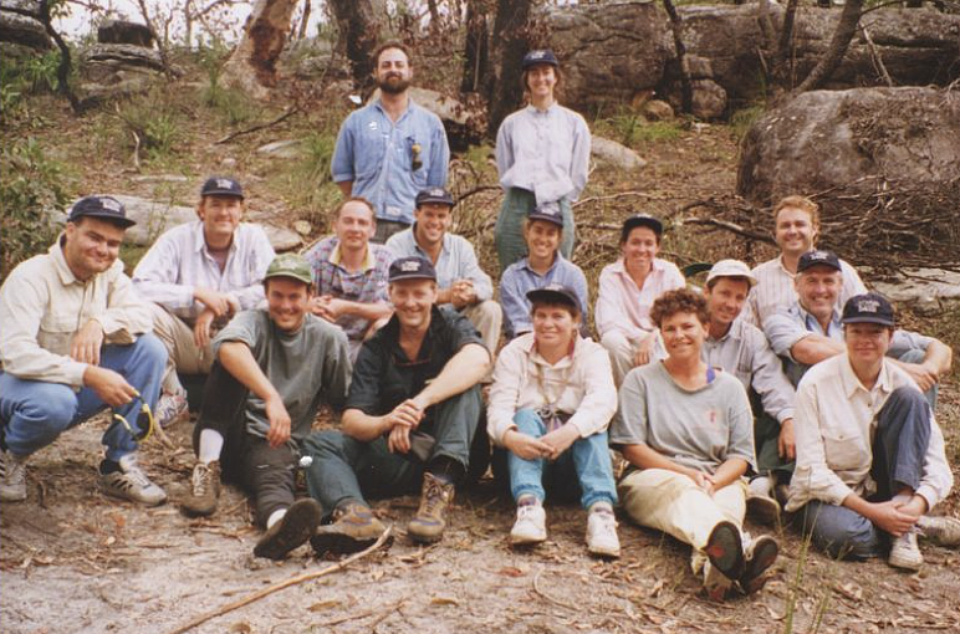
ICDA and BoardPro partnership unlocks digital governance tools for not-for-profits nationwide
Posted on 10 Dec 2025
Adele Stowe-Lindner, Executive Director, Community Directors The Institute of Community Directors…
Posted on 22 Jun 2023
By Greg Thom, journalist, Our Community

The amount of money donated by Australians to charity each year has increased by $676 million to more than $13.4 billion according to new figures released today by the Australian Charities and Not-for-profits Commission.
The 9th edition of the ACNC Australian Charities Report also revealed revenue earned by the nation’s charities surged $14 billion to more than $190 billion.
The annual analysis of the charities sector, the first to be released under Commissioner Sue Woodward, looked at the annual information statements of more than 49,000 charities from the 2021 reporting period.
The time frame covered by the report coincides with covid-19 and offers a valuable ‘rear view mirror’ lens on the dramatic impact of the pandemic on the sector.
The report confirms the widely documented decline in the number of Australians volunteering, as previously reported by Our Community, which fell by 596,000 to 3.2 million between 2018 and 2021.
The significant decline in volunteer numbers – which dropped by more than 200,000 in 2021-2022 alone – is currently being addressed via the National Strategy for Volunteering.
The wide-ranging ACNC report provides a comprehensive snapshot of the charity sector, from a state-by-state breakdown of which charities attract the most donations to what charities spend money on and the split between volunteers and paid employees.
Key findings include:
The report highlighted the hot button issue of tax-deductible giving, with 41.5 per cent of charities obtaining deductible gift recipient (DGR) status from the Australian Taxation Office.
The findings confirmed DGR-endorsed charities are more likely to receive donations.
In her foreword to the report, Ms Woodward said the Productivity Commission’s review into philanthropy, which is exploring ways to double philanthropic giving by 2030, has helped make philanthropy “part of the current national conversation.”
While an estimated $13.4 billion of charity revenue (7 per cent) is made up of donations and bequests, charities distributed $9.7 billion in grants and donations.
“Our data confirms not only that philanthropists are significant in number – nearly one fifth of registered charities are grant makers – but they also play a very significant role in funding those charities we regulate,” said Ms Woodward.

At more than $97 billion, government funding and government grants accounted for more than 51 per cent of charities’ revenue.
Break-out quote: “Despite challenges, Australia’s registered charities reported a significant increase in total revenue, donations and assets in the 2021 reporting period.”
Key changes to the methodology of this year’s report included more state-based analysis, comparisons with data from the 2018 Australian Charities Report and increased data visualisation.
The type of charities generous Australians chose to donate to or bequeath money to after they died varied widely across the nation.
While NSW residents were most likely to have reached into their pockets to support the work of the Smith Family, Tasmanians, in a state famous for its landmark environmental protection battles, perhaps unsurprisingly were more likely to support the Wilderness Society ($11 million).
The Charities Report included a breakdown of the most popular charities by state and territory:
ACT
CARE Australia $11.7 million
Australian Christian Lobby $8.5 million
The Australia Institute $6.2 million
NSW
The Smith Family $124 million
Médecins Sans Frontières Australia $105 million
NT
Charles Darwin University $2.1 million
Baptist Care Northern Territory $2 million
Warddeken Land Management $1.8 million
Queensland
Asia Pacific Internet Development Trust $590 million
University of Queensland Group $64 million
South Australia
Church of Scientology Religious Education College $20 million
University of Adelaide $10.9 million
Prince Alfred College Foundation Scholarship Fund $9 million
Tasmania
The Wilderness Society $11 million
Tasmanian Land Conservancy $10.9 million
Victoria
Susan McKinnon Foundation $330 million
World Vision Australia $288 million
Salvation Army $122 million
WA
Minderoo Foundation Group $500 million
University of Western Australia $35 million
Victory Life Community Services $20 million
Key changes to the methodology of this year’s report included more state-based analysis, comparisons with data from the 2018 Australian Charities Report and increased data visualisation.
The changes are in line with Ms Woodward’s previously stated determination to use the most up-to-date data tools and analysis available to create a clearer picture of the sector.
The ACNC last year upgraded its Charity Register by adopting Our Community’s social sector classification system, CLASSIE.
The CLASSIE taxonomy, which also uses Our Community’s SmartyGrants platform, allows people to search by activity type, location, beneficiary (who each charity helps) and registration status.
The ACNC report shines a light on the diverse nature of Australia’s charity sector, which ranges from tiny local community groups to large universities and international aid organisations.
The statistics reveal most charities are small (21.3 per cent) or extra small (31.6 per cent), attracting revenue of less than $250,000 and $50,000 per year, respectively.
Fifty per cent of all charities operate with no paid staff, and that proportion rises to nearly 90 per cent for extra small charities, meaning the vast majority of those are completely run by volunteers.
Small charities were the only group that reported a rise in the number of volunteers, boosting their number by 9,300 (2.8 per cent) compared to the previous reporting period.
Overall, the Charities Report found the ratio of volunteers to employees decreased as the size of charities increased.
Impact of covid-19
Of the 2000 charities that reported they ceased operating during the 2021 reporting period, 860 cited the impact of the pandemic as the reason.
According to Australian Taxation Office data included in the Charities Report, about 12,000 charities received JobKeeper payments totalling $7.6 billion.
At the peak of pandemic lockdowns, JobKeeper payments to charities supported an estimated 331,000 people in the sector between April 2020 and September 2020.

Posted on 10 Dec 2025
Adele Stowe-Lindner, Executive Director, Community Directors The Institute of Community Directors…

Posted on 10 Dec 2025
The Australia Institute has called on the federal government to force Australian businesses to be…

Posted on 10 Dec 2025
Economic empowerment is essential to enabling recovery, restoring agency and preventing future…
Posted on 10 Dec 2025
A long-time advocate for rough sleepers in northern New South Wales has been named her state’s…

Posted on 10 Dec 2025
What a year 2025 has been, particularly at a national level where the Parliament and politics as we…

Posted on 10 Dec 2025
Anyone working in an organisation knows it: meetings follow one after another at a frantic pace. On…

Posted on 10 Dec 2025
As a qualified yoga instructor who learned the practice in her hometown of Mumbai, Ruhee Meghani…

Posted on 10 Dec 2025
Community Directors trainer Jon Staley knows from first-hand experience the cost of ignoring…

Posted on 10 Dec 2025
Stressed, overwhelmed, exhausted… if you’re on a not-for-profit board and these words sound…

Posted on 10 Dec 2025
The Institute of Community Directors Australia trains over 22,000 people each year, which gives us…

Posted on 09 Dec 2025
The late Sir Vincent Fairfax is remembered as a business leader, a chairman of AMP, and an active…

Posted on 08 Dec 2025
A pioneering welfare effort that helps solo mums into self-employment, a First Nations-led impact…